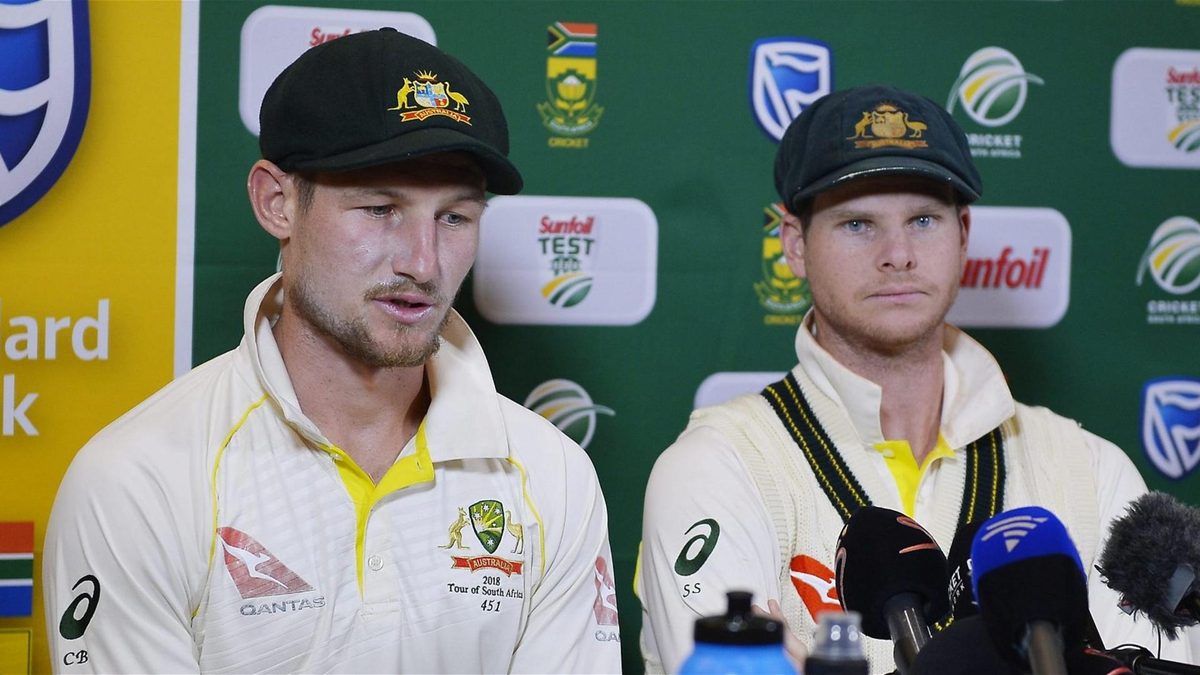
More than three years after that fateful day in Cape Town, the Sandpapergate scandal has reared its head again, and this time it’s the bowlers themselves in the sights.
Cameron Bancroft, one of the three original protagonists, sparked the revival, saying it was “self-explanatory” that the bowlers knew what was going on at the time, in an interview with The Guardian. Michael Clarke and Adam Gilchrist then weighed in via their respective radio shows, offering scepticism about the original investigation and the conclusion that the plot was limited to three players and three players only.
Cricket Australia have confirmed they would always be happy to reopen the investigation if new evidence came to light, but have also said that, after talking to Bancroft, there is no new information to warrant any action being taken. The bowlers in question, Mitchell Starc, Pat Cummins, Josh Hazlewood and Nathan Lyon, have since put out a strong statement criticising the questioning of their integrity by “past players” and requesting “an end to the rumour-mongering and innuendo”.
For many, the reaction has been a shrugging of the shoulders, with there a growing sentiment to re-evaluate even the misdemeanours of the ball-tampering trio, punished, in some eyes, too harshly for something which carries an in-game sanction of just five penalty runs. Reverse swing is something that enhances the game, goes the argument, and it’s naive to suggest that that was an isolated incident globally. Even if the four bowlers did turn a blind eye to something they knew was going on, does that make them any different to anyone else?
However, in the eyes of Cricket Australia, the charge sheet contained far more than just ball-tampering, with the post-incident cover-up also contributing to the trio’s punishments. Below is the list of what each was found guilty of in full.
Steve Smith
(a) knowledge of a potential plan to attempt to artificially alter the condition of the ball;
(b) failure to take steps to seek to prevent the development and implementation of that plan;
(c) directing that evidence of attempted tampering be concealed on the field of play;
(d) seeking to mislead Match Officials and others regarding Bancroft’s attempts to artificially alter the condition of the ball; and
(e) misleading public comments regarding the nature, extent and participants of the plan
David Warner
(a) development of a plan to attempt to artificially alter the condition of the ball;
(b) instruction to a junior player to carry out a plan to take steps to attempt to artificially alter the condition of the ball using sandpaper;
(c) provision of advice to a junior player regarding how a ball could be artificially altered including demonstrating how it could be done;
(d) failure to take steps to seek to prevent the development and/or implementation of the plan;
(e) failure to report his knowledge of the plan at any time prior to or during the match;
(f) misleading Match Officials through the concealment of his knowledge of and involvement in the plan; and
(g) failure to voluntarily report his knowledge of the plan after the match
Cameron Bancroft
(a) knowledge of the existence of, and being party to, the plan to attempt to artificially alter the condition of the ball using sandpaper;
(b) carrying out instructions to attempt to artificially alter the condition of the ball;
(c) seeking to conceal evidence of his attempts to artificially alter the condition of the ball;
(d) seeking to mislead Match Officials and others regarding his attempts to artificially alter the condition of the ball; and
(e) misleading public comments regarding the nature, extent, implementation and participants of the plan
Perhaps of particular interest is Warner’s charge (g): “failure to voluntarily report his knowledge of the plan after the match”. The bowlers’ statement makes clear their position that, before the plan was put into the place, they had no knowledge of what was taking place, saying that they “have already answered questions many times on this issue”.
But it’s still unclear exactly how the aftermath unfolded, from the bowlers’ point of view. What was discussed at tea or at stumps, once those images had started travelling around the world, but before the Smith-Bancroft press conference which served to obfuscate what had transpired? It may well be the case that the bowlers remained in the dark until days later. But with none of the quartet interviewed in the investigation afterwards, it’s a question that remains unanswered.
It may well be that their statement brings to an end the latest chapter, serving as an epilogue to the whole saga. But what’s also clear is that, by the letter of the laws used to punish Bancroft, Warner and Smith, any knowledge of the plan during the Test – not just before it was put into place – which was concealed thereafter should be grounds for punishment. Until everyone involved makes clear everything they know, when they first knew it, and what they did next, any conclusion will feel a little unsatisfying.








